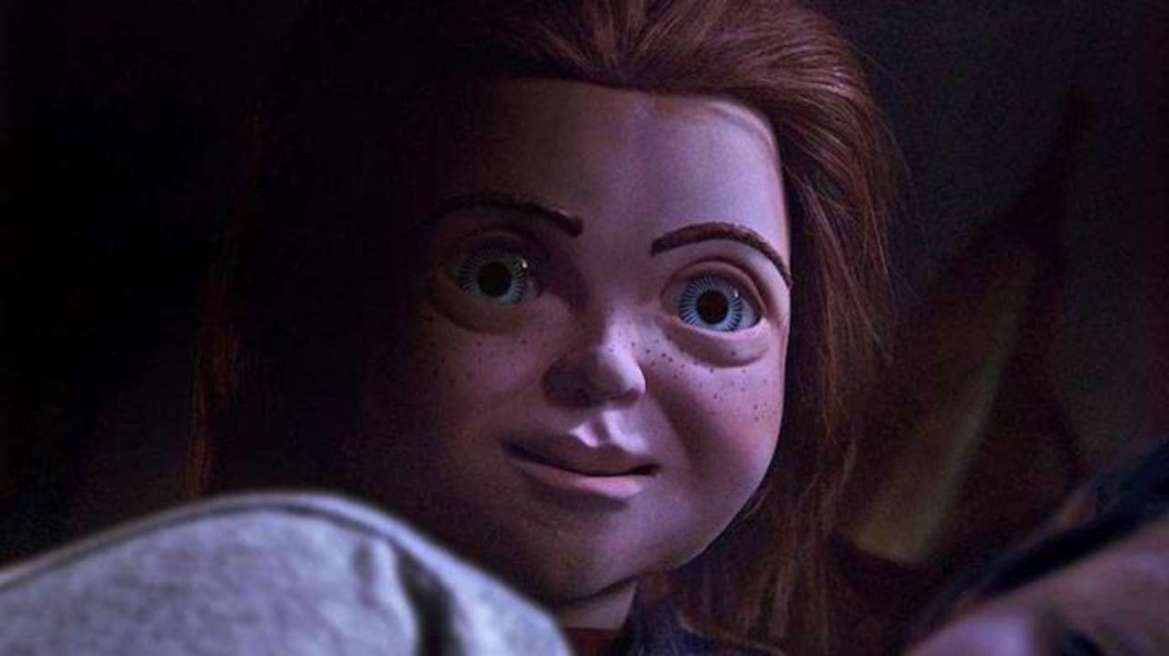
In 1988 Tom Holland released Child’s Play, a simple story about a killer doll which spawned a franchise that hasn’t slowed down yet. When MGM announced plans for a remake last year the question was, “Why?” Yes, this is a common refrain regarding all remakes, but in a world where killer dolls are their own genre, and especially when children’s toys are more screen-based than physical, what is the point of bringing back Chucky to a new generation?
Apparently this same question plagued director Lars Klevberg and screenwriter Tyler Burton Smith because instead of a straightforward remake of Child’s Play the movie strips away almost every element of the original to create something new. This new Child’s Play, heavily inspired by the work of ’80s master Steven Spielberg than Tom Holland, is high on gore and weirdly humorous, though I’m not sure that’s the tone they wanted. Nothing makes sense in this movie, from the characters (and the actors invited to star in this) to the role of Chucky himself. It’s not so terrible it’s a secret masterpiece (this ain’t Serenity, folks), but it’s far from good enough to warrant another viewing.
Like its predecessor, this Child’s Play follows Andy (Gabriel Bateman), a deaf boy recently moved to a new town with his mother, Karen (Aubrey Plaza). Despite living in a nice apartment but seemingly unable to afford a new hearing aid for Andy, Karen brings home a new virtual friend for Andy. The doll, Buddi, is akin to a walking Alexa with a face (and Mark Hamill’s voice) that dubs itself Chucky. Unfortunately this Buddi has been tampered with and soon develops an unhealthy obsession with Andy, hurting anyone who would hurt Chucky’s new best friend.
It’s admirable that Klevberg and Burton Smith wished to go in a completely new direction. Where the original had serial killers and voodoo this is more firmly rooted in the world of technology and the mass automation of everything, leading us to complacently believe that it’s safe. Make no mistake, this is an open indictment of everything from self-driving cars to automatic door locks which we can all relate to. However with that plot it’s hard not to see this as another in a long line of “technology bad” features, especially when Black Mirror has been saying these same things for years. In fact, much of Andy’s obsession and reliance on Chucky in the film’s first half seems like a rip-off of the recent Black Mirror episode, “Rachel, Jack and Ashley Too.”
There’s a trollish nature to the film, starting from the introduction of the Buddi itself. With its massive head and squashy face the audience is already laughing at the faux commercials of grinning families falling in love with what looks like a deformed Cabbage Patch doll. It’s unclear whether Chucky is a CGI doll or a practical effect though everything about him, from his walk to his head turns is off-putting in the same way Renesmee was. Hamill’s eschews doing anything theatrical with his voice, instead giving us something meant to pass for soothing but that feels uncomfortable and creepy, something you’d hear in a weird dentist office or something.

One of the oddest things about Child’s Play, though, is the world it inhabits. References to ’80s movies like E.T. and Robocop abound coupled with a seemingly lower-income neighborhood immediately undone by Karen’s pretty nice apartment. Even stranger is that this world, presumably 2019, is one where every. single. person has a Kaslan product – the company owned by Tim Mathieson’s character that created the Buddi – in their home. People today can barely invest in one Amazon Echo let alone ALL the things that are presumably standard in a millionaire’s home. At the same time the Buddi creates frothing hordes of people camping out for what amounts to a high-priced Tickle Me Elmo. It’s hard not to see this as being about 10 years too late.
Thankfully the gore, itself mined from the likes of ’80s Troma films, is on display. A slight divergence into children finding violence funny could have yielded some satire but it’s abandoned quickly. Instead we’re treated to inventive kills akin to the work of Trick ‘R Treat and that certainly sustains the 90-minute runtime. A subplot involving a face and a watermelon yields some particularly grim grins.
Out of everything that happens in Child’s Play the weirdest is the film’s cast. Gabriel Bateman leads the entire movie as Andy and he’s a bright new child star. I’m unclear if he’s actually deaf like the character; I’m leaning towards no which, considering the movie does zero with disability might be a good thing. He has the tenacity to pull off a character who feels alone and mistreated by his mother’s boyfriend, though there needed to be some serious interaction between mother and son. At times it feels like Plaza, presented as the sexy MILF, is more of a babysitter than a mother. Once Andy starts acting out it’s hard to sympathize with Karen because she’s never around.
It’s possible Plaza and Brian Tyree Henry only had a week to film because they barely register. Plaza gets the opening to lure in audiences with her caustic wit, but outside of that she’s walking in and out of rooms and doesn’t have anything to show for signing onto the role. Henry also has some moments of levity, and he has an intense emotional sequence when someone close to him dies, but he’s completely wasted. This is an ’80s kids movie that kids can’t see because of the rating.
Child’s Play (2019) might be worth a watch if you’re oddly curious and have a few Redbox dollars to spare. There’s a lot of dark humor though it’s unclear whether that’s the intentional tone. Chucky is creepy and the gore is inventive. Otherwise this goes up there with the reboot of Poltergeist and Pet Semtary as features you won’t remember were remade in a few years.

